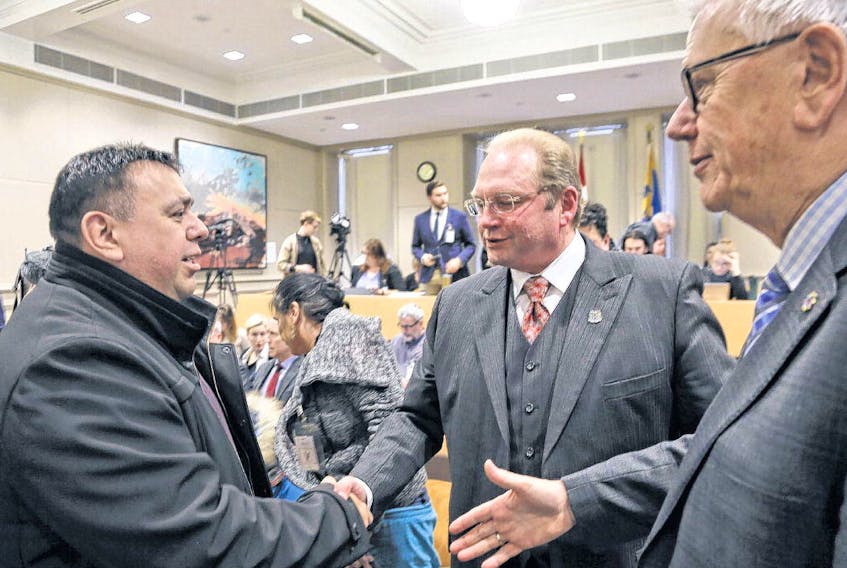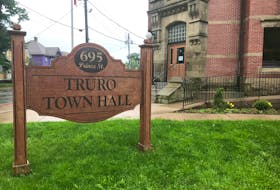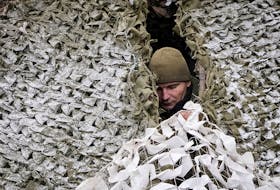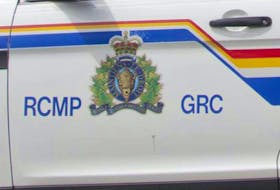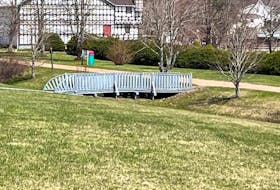The polarizing figure of Edward Cornwallis has lost its place of prominence in a south-end Halifax park.
Halifax regional council voted 12-4 Tuesday to immediately remove the statue of the city’s founder and place it in temporary storage until a decision is reached on what do with it in the long term.
After listening to the council debate from the front row of the gallery, Chief Morley Googoo left chambers with a tear in his eye.
“I feel very good,” said Googoo, regional chief of the Association of First Nations. “The main thing that people want to look at is the truth and reconciliation call to action. That requires a new relationship.
“This is the opportunity for leadership to showcase themselves with the relationship with Halifax, and it’s a win.”
The win followed years of demonstrations and commentary, spilling over into spirited debate at the water cooler, the kitchen table, on social media and in council chambers.
Heralded as a great leader by some, the controversial Cornwallis has been denigratedby others for putting a mid-1700s bounty on the lives of Mi’kmaw men, women and children in an effort to drive them out of mainland Nova Scotia.
Mayor Mike Savage was touting Tuesday’s decision as a win, too.
“I am pleased that the vote went the way it did and that it was decisive,” Savage said. “We get paid to make decisions that are difficult. I feel very strongly that this is the right thing to do but I don’t discredit those who disagree with me.”
Introducing the motion, Coun. Bill Karsten told fellow councillors
that “the best thing to do” was to approve it.
“Is this going to make a difference in your life, negatively?” Karsten said. “I suggest not.”
Deputy Mayor Waye Mason said taking the statue down “removes an obstacle” to meaningful dialogue.
When it was Savage’s turn to address council, he talked about playing cowboys and Indians as a child in his Dartmouth backyard.
“Everybody wanted to be a cowboy,” the mayor said. “My last name carried a certain inevitability. ‘You are a savage,’ they said. ‘You should be the Indian.’ What they meant was, you’re an Indian, you are less than us. In the 1970s in Dartmouth, the word Mi’kmaq didn’t exist, at least not to us. It was a lake, a tavern, a longawaited shopping mall.”
Savage said the school history books didn’t talk much about what colonization meant to the Indigenous people.
“We are all a product of our history but we do not have to be a prisoner to it.”
Coun. David Hendsbee wondered what is meant by temporary storage and suggested that the statue be relocated to the waterfront, the Royal Artillery Park, Citadel Hill or another location.
“We should not be hiding our history,” Hendsbee said.
Coun. Lisa Blackburn countered that taking the statue down is not changing or hiding history.
“Statues are not how we record history,” said Blackburn, suggesting history is chronicled in books and museums.
“Reconciliation begins with reconcili-action.”
Coun. Steve Streatch suggested a Founders Plaza that could include the Cornwallis statue along with statutes of Acadians, Mi’kmaq and others.
Coun. Richard Zurawski talked about a history of broken promises made to the Indigenous people by European settlers.
“Let’s end the 500 years of broken promises and take away this visual symbol of supremacy,” he said.
The mayor said he did not have a timetable for the statue removal but a staff report suggested it could be taken down and stored at a cost of about $25,000.
It was decided in October that a panel be struck to deal with the statue but the Assembly of Nova Scotia Mi’kmaq Chiefs said last week that it was frustrated with how long the process was taking. The chiefs demanded that the statue be removed immediately.
Coun. Tim Outhit said council had been pressured into making a decision by the chiefs’ move and by the expectation of violence from those who opposed and protested the statue.
“I am going to support this but I am doing it with sadness and a little bit of resentment,” Outhit said.
The staff report raised concerns about rising tensions around the statue, including a proposed Sunday protest that could result in damage to the statue and potential conflicts among those on different sides of the issue.
“We are concerned by the backlash,” Outhit said. “People say, why are you being bullied? This could have been the beginning of something good. Threaten us with violence and we’ll move you up the agenda. That’s not good.
“It’s the right thing to do, but for the wrong reason.”
The mayor and Mi’kmaw leaders agreed that the panel could meet to further discuss reconciliation efforts.
“Today we heard the voices of leaders who genuinely want to make efforts for reconciliation with the Mi’kmaq of Nova Scotia,” Chief Terrance Paul, cochairman of the assembly of chiefs, said in a news release. “We are pleased with today’s decision and hope that this will reopen doors for real nation-to-nation discussions and for next steps to continue right away.”
The motion passed will have the mayor’s office seek to reengage the chiefs in establishing a special advisory committee. Should the chiefs choose not to re-engage under the current committee process, the city’s chief administrative officer will return to council within six months with a revised approach to examine the commemoration of Cornwallis.


